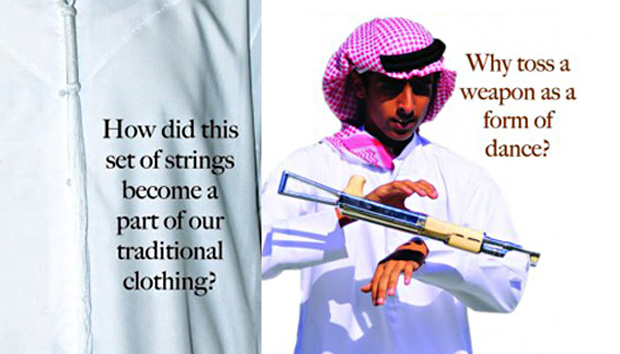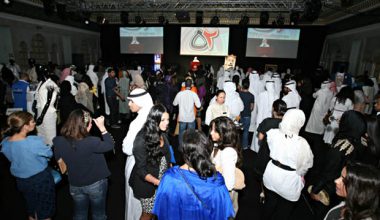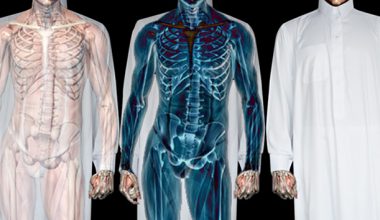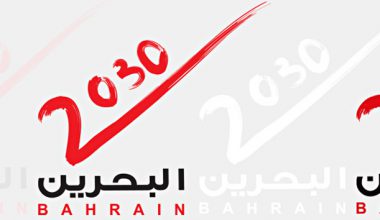 Yes every day we encounter Emiratis wearing their traditional Kandoorah and Abayah. Some of our parents, family members or friends wear them too, but however much we come across white kandooras, burga’s, black abayas and other traditional clothing and customs, how many of us actually know the origin of these traditions? How were these traditions born? How many of us know the stories behind them and why they exist?
Yes every day we encounter Emiratis wearing their traditional Kandoorah and Abayah. Some of our parents, family members or friends wear them too, but however much we come across white kandooras, burga’s, black abayas and other traditional clothing and customs, how many of us actually know the origin of these traditions? How were these traditions born? How many of us know the stories behind them and why they exist?
It took a lot of ambition, determination, hard work and sleepless nights of a few girls from Zayed University to not just answer these questions, by putting the answers together into a published book titled ‘The Secrets Behind The UAE Identity’ for the public. After hearing about this original, unique and very needed publication, the Khaleejesque Team were very keen on finding out more about the ‘behind the scenes’ work of this informative project.
Khaleejesque Team: How did the idea of compiling this book come to you?
Bushra Al Madani of ‘The Secrets Behind The UAE Identity’ Team: The book was originally created as a part of our graduating project at Zayed University, so we were actually required to come up with an original campaign idea which has to do with the UAE. We were inspired to create a book right from the start; we just had to come up with a unique content that would grab the public’s attention. This was when the story my dad has previously told me regarding “why the Egal is black” came to my mind. It made me realize that it is in fact an interesting story regarding our tradition that not a lot of people know about, that’s when we came up with the idea of creating a book that covers historical stories on how our tradition was formed and how it first started. For example: Why is the nose used when greeting? Why do men wear the Tarboosha? Why do women wear the Burga’? Why is a weapon used as a form of dance? And many more.
 After we came up with the idea we wanted to make sure if the public was actually aware of those stories or not before proceeding with the project plan. Therefore, we conducted a survey on the 10th of February, 2010 with 100 UAE nationals between the ages of 15 to 50 and asked some of those questions. The results showed that 72% of participates did not know the correct answers, while only 28% of them answered correctly. Nonetheless, most of those who answered correctly did not know the complete story or got it by chance. In addition, the survey grabbed the attention of all our participants, whereas they were all eager on finding out the correct answers. That was when we knew for sure that our topic was a winner.
After we came up with the idea we wanted to make sure if the public was actually aware of those stories or not before proceeding with the project plan. Therefore, we conducted a survey on the 10th of February, 2010 with 100 UAE nationals between the ages of 15 to 50 and asked some of those questions. The results showed that 72% of participates did not know the correct answers, while only 28% of them answered correctly. Nonetheless, most of those who answered correctly did not know the complete story or got it by chance. In addition, the survey grabbed the attention of all our participants, whereas they were all eager on finding out the correct answers. That was when we knew for sure that our topic was a winner.
KT: Your distinguished skills in the Marketing and Sales of your book have been recognised by the ‘Tamayez Wu Faalak Tayeb’ Awards and have been highlighted in the Al Khaleej newspaper. Can you tell us more about how you market your work to the public?
BA: In order to promote and spread the word regarding our book we had to come up with several tactics. The first one was a Facebook group we created which now contains over 600 members. We also created a variety of print advertisements and sent press releases to several newspapers. Also, we had an on air interview and a promotional message played several times on Virgin Radio, and mall events in both Mall of the Emirates and Dubai Mall lasting for two days each. We encountered an unexpected event at the American University of Sharjah; they approached us and requested that we sell our book during their global day. After all that, we started receiving offers from individuals as well as companies who have heard of or seen our book. We are still receiving offers up to this day; we have a full schedule ahead of us with companies who have arranged to meet us regarding our book.
 KT: I hope you don’t mind me asking you this, but did you know of the content of your book and the historical meanings behind traditional customs or clothing before compiling this book? Or was it all new stuff to you as well?
KT: I hope you don’t mind me asking you this, but did you know of the content of your book and the historical meanings behind traditional customs or clothing before compiling this book? Or was it all new stuff to you as well?
BA: We honestly did not know any of the data/stories in our book beforehand, except for the story on why the Egal is black; my dad previously told me that story. The fact that we did not know the data and just went on with the project was both scary and risky, we were in constant worry on whether the stories actually exist and if we will be able to dig them out or not. It took a lot of hard work and sleepless months to put it all together, and I am glad to say that we are more than proud of what we have come up with.
KT: How did you manage to ensure that all the information in your book is accurate and correct? What sources did you depend on?
BA: In order to form the book accurately, we had to visit Abu Dhabi, Al Ain, Sharjah, and Dubai and interviewed a vast number of researchers, highly educated individuals, and the elderly. This is mainly for the reason that, the stories we have written in our book cannot be found anywhere else so we basically had to dig them out through interviews. After that, we went through all the interview records we have collected and wrote down the points or stories that were repeated more than once. This part was really tough since no one actually knew the complete stories.
KT: Your posters on your facebook group show the RTA, Dubai Culture, Zayed University, Emiratweet, Mall of the Emirates and Dubai Mall as your sponsors. That’s great support! What efforts did you take to get all this support and encouragement?
BA: Well, that was actually the toughest part of all. No one agreed on sponsoring us until they actually got to see all the stories we have written and some examples of the layout pages. So we actually visited the printing press and asked them to print 2,500 copies of the book for us and we were still not sure if we were going to receive financial support or not.
KT: When I look at what you have done in your book, I don’t just see a history book merely narrating stories, it is also a place for connection between older and younger Emirati generations, a place for Emirati youth to work for the future of their country and people, without forgetting their origins and history. Do you mind telling us about how compiling this book personally further developed a stronger bond between you and older people in your family and community?
BA: The UAE is a young country that has developed very fast within the last few years; there is a huge gap between the way we now live and the older generations. Therefore, by addressing the issues in the book that are relevant to our daily life styles as well as theirs growing up creates a common ground which gets us closer and helps us interact.
KT: With the great publicity of your project, communicating the underlying meanings of traditional Emirati clothing also means that you are opening a new door of connection between the local and expatriate community in the UAE. What is your bigger vision behind your project and how do you plan on taking what you have established further and building on this initiative?
BA: Our vision is to actually create several series of our book, all to do with the UAE identity but focusing on different aspects of it. We are also hopefully planning on publishing our book and getting Amazon to distribute it worldwide. We are aiming to reach a wide range of nationalities, so that they would all better understand the UAE customs and tradition.
To find out more about ‘The Secrets Behind The UAE Identity’, join their Facebook group here, or get your own copy for AED 50 by sending an email to UAEsecrets@gmail.com
– Images: The Secrets Behind The UAE Identity Facebook Page
By: Khamel Al Safi







